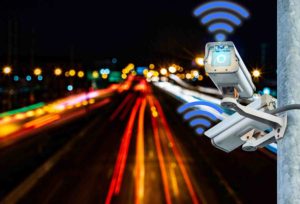By Navjoy
The intricacies of your daily drive may surprise you. The roads you drive look deceptively simple when in reality, there is an abundance of technology working behind the scenes to make your drive smooth. This is Part 1: Information sharing of the 3-part series on Technology and Your Drive.
 Connections
Connections
The most important aspect of roadway technologies is how they connect to distribute collected information to necessary parties. The technologies on their own would be almost useless. For this connection, most agencies use either ethernet, fiber, or both. Ethernet is designed for more local use, while fiber is quicker and can span over much longer distances. These connections allow roadway technology from cameras and sensors to bluetooth tracking to communicate information back to a designated location, often a Traffic Management Center (TMC).
Locations
Despite the sheer volume of connections, they aren't exactly something you are going to notice on your drive. The fiber is often buried underground, but its connections are created via a fiber lateral in a manhole that extends to the connected cabinet or sign. However, you may have seen orange posts along the side of a highway or road before; those posts are your only real visible indication that a fiber network is present. The posts illuminate the locations of these networks for anyone digging or doing work in that area.
Challenges
However, there are challenges with these connections that require further engineering to solve. It is desirable to have multiple connections and diverse pathways for this data to transmit through in the event that a connection gets severed. The connection can be broken via a switch or via fiber. A switch is usually located in a traffic Variable Message Sign (VMS) or a traffic signal cabinet and is what connects the devices on a shared network. The original solution to avoid a broken connection was something our ITS expert, Mike Paul, referred to as a collapsed ring. A collapsed ring is a network structure that ensures if the power went out to one switch, neighboring switches could continue to deliver the data on another route. However, the collapsed ring structure did not help if the fiber was damaged, making it much less preferable to the new method of developing diverse paths.
 Solutions
Solutions
"We've had to think outside the box to avoid getting a collapsed ring," Paul said. He explains that it's better to build more paths that are redundant and in varying locations, as that ensures the connection won't falter if one path is broken and that multiple paths won't be damaged in one instance. With extra paths, it shouldn't be a problem if the fiber or the switch is damaged because the data from all other switches in the ring would have other paths to travel to get to the destination. He says you especially want "diverse paths for key sites" that have several subrings to transport to a major ring and get back to the data collection destination at a datacenter.
Virtual connections make traffic systems function. From helping to sync up traffic signals, to alerting drivers of an incident or tracking travel time, the connections are the basis for everything else to be possible. These connections make the technologies in parts two and three effective. Because of their importance, we have ITS expert and Fiber Network Division Manager Mike Paul on our team to assist our partners with developing a secure and reliable network connection.

 Connections
Connections Solutions
Solutions
